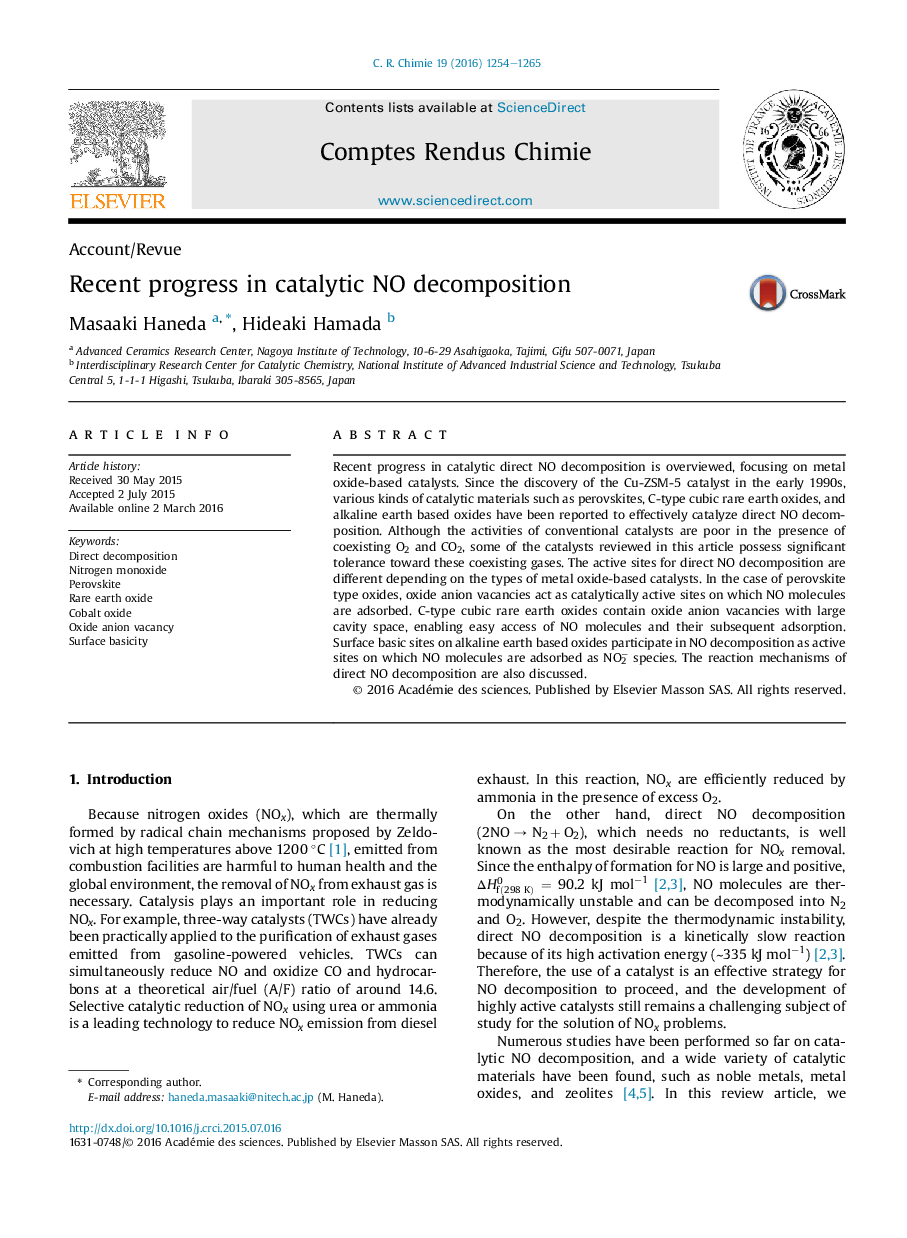| Article ID | Journal | Published Year | Pages | File Type |
|---|---|---|---|---|
| 6468695 | Comptes Rendus Chimie | 2016 | 12 Pages |
Recent progress in catalytic direct NO decomposition is overviewed, focusing on metal oxide-based catalysts. Since the discovery of the Cu-ZSM-5 catalyst in the early 1990s, various kinds of catalytic materials such as perovskites, C-type cubic rare earth oxides, and alkaline earth based oxides have been reported to effectively catalyze direct NO decomposition. Although the activities of conventional catalysts are poor in the presence of coexisting O2 and CO2, some of the catalysts reviewed in this article possess significant tolerance toward these coexisting gases. The active sites for direct NO decomposition are different depending on the types of metal oxide-based catalysts. In the case of perovskite type oxides, oxide anion vacancies act as catalytically active sites on which NO molecules are adsorbed. C-type cubic rare earth oxides contain oxide anion vacancies with large cavity space, enabling easy access of NO molecules and their subsequent adsorption. Surface basic sites on alkaline earth based oxides participate in NO decomposition as active sites on which NO molecules are adsorbed as NO2â species. The reaction mechanisms of direct NO decomposition are also discussed.
